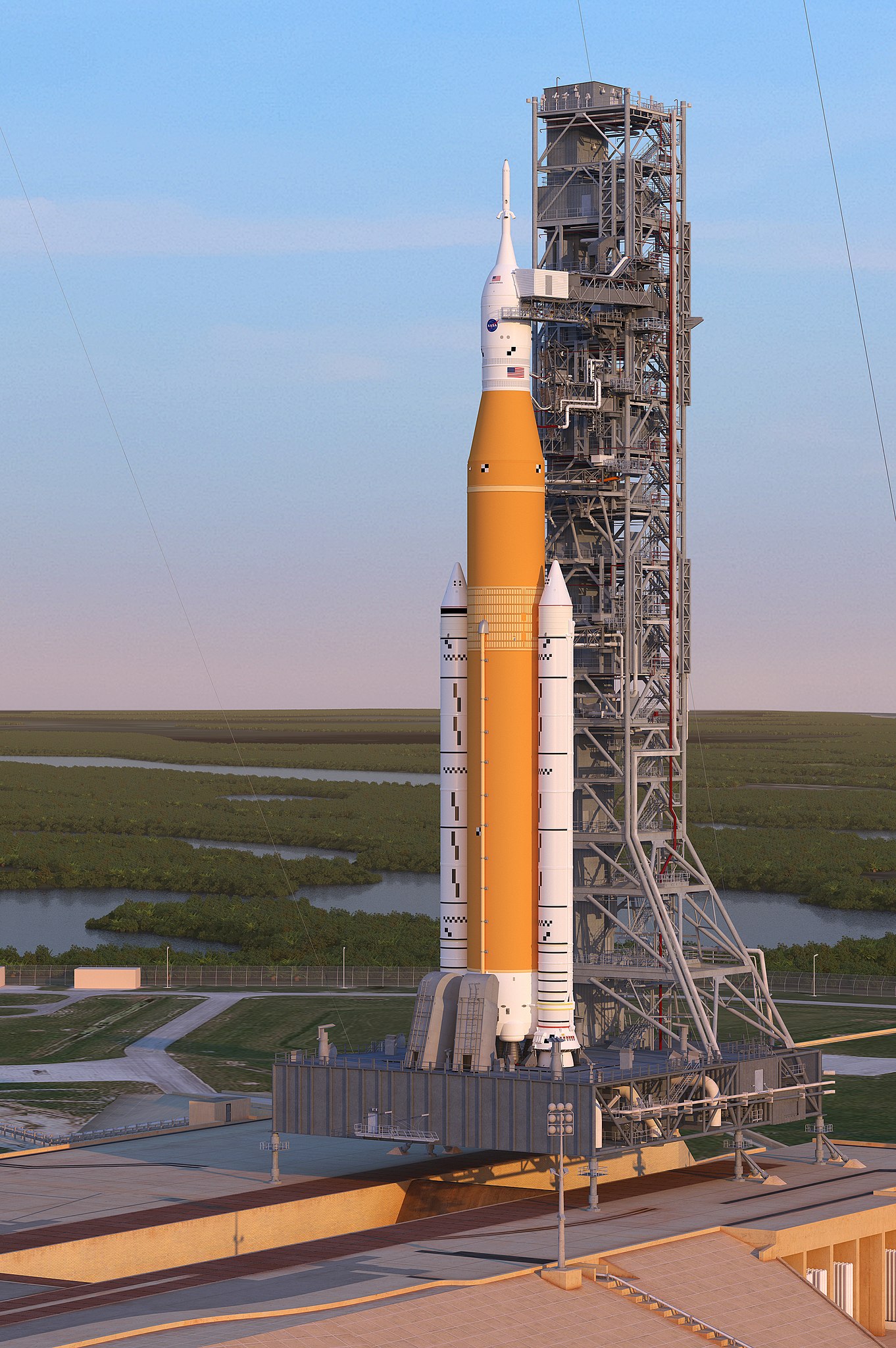Space Launch System(SLS)

Photo Credit : Artist's rendering of the Space Launch System Block 1 sitting on Launch Pad 39A with the Orion spacecraft at sunrise. , via public domain Nasa wikipedia commons.
The Space Launch System (SLS) is an American super heavy-lift expendable launch vehicle, which has been under development by NASA since its announcement in 2011.
Quick Facts About the SLS.
- Type: Super heavy-lift launch vehicle.
- Origin : United states.
- First flight: 16 November 2022, 1:47:44 am EST (6:47:44 am UTC).
- Mass : Block 1: 95 t (209,000 lb), Block 2: 130 t (290,000 lb) .
- Length/Height : 111.25 m (365.0 ft).
- Diameter : 8.4 m (28 ft), core stage.
- Payload to LEO : Block 1: 95 t (209,000 lb), Block 2: 130 t (290,000 lb) .
- Payload to TLI : Block 1: > 27 t (60,000 lb), Block 1B Crew: 38 t (83,700 lb), Block 1B Cargo: 42 t (92,500 lb), Block 2 Crew: > 43 t (94,700 lb), Block 2 Cargo: > 46 t (101,400 lb).
- Propellant: Boosters: PBAN, APCP. First stage/Second stage : LH2 / LOX.
- Engines: Boosters: 2 five-segment Solid Rocket Boosters with thrust of 29.2 MN (2,980 tf; 6,600,000 lbf) sea level ,32 MN (3,300 tf; 7,200,000 lbf) vacuum . First stage: 4 RS-25D/E with thrust of 9.1 MN (930 tf) vacuum. Second stage :(Block 1) 1 RL10B-2 engine with thrust of 110.1 kN (11.23 tf; 24,800 lbf). (Block 1B/2) 4 RL10C-3, later 4 RL10C-X engines with thrust of 440 kN (45 tf; 99,000 lbf)
The Space Launch System (SLS) is an American super heavy-lift expendable launch vehicle used by NASA. As the primary launch vehicle of the Artemis Moon landing program, SLS is designed to launch the crewed Orion spacecraft on a trans-lunar trajectory. The first SLS launch was the uncrewed Artemis 1, which took place on 16 November 2022.
Development of SLS began in 2011, as a replacement for the retired Space Shuttle as well as the cancelled Ares I and Ares V launch vehicles. As a Shuttle-derived vehicle, the SLS reuses hardware from the Shuttle program, including the solid rocket boosters and RS-25 first stage engines. A Congressionally mandated late 2016 launch was delayed by nearly 6 years.
All Space Launch System flights are launched from Launch Complex 39B at the Kennedy Space Center in Florida. The first three SLS flights use the Block 1 configuration, comprising a core stage, extended Space Shuttle boosters developed for Ares I and the ICPS upper stage. An improved Block 1B configuration, with the Exploration Upper Stage, is planned to debut on the fourth flight; a further improved Block 2 configuration featuring new solid rocket boosters is planned to debut on the ninth flight. After the launch of Artemis 4, NASA plans to transfer production and launch operations of SLS to Deep Space Transport LLC, a joint venture between Boeing and Northrop Grumman.
Credit/References and for further info please see:
https://en.wikipedia.org/wiki/Space_Launch_System

Photo Credit : NASA’s Space Launch System rocket carrying the Orion spacecraft launches on the Artemis I flight test. , via public domain NASA/Joel Kowsky from https://www.flickr.com/photos/nasahqphoto/52504616014/in/photostream/ wikipedia commons.